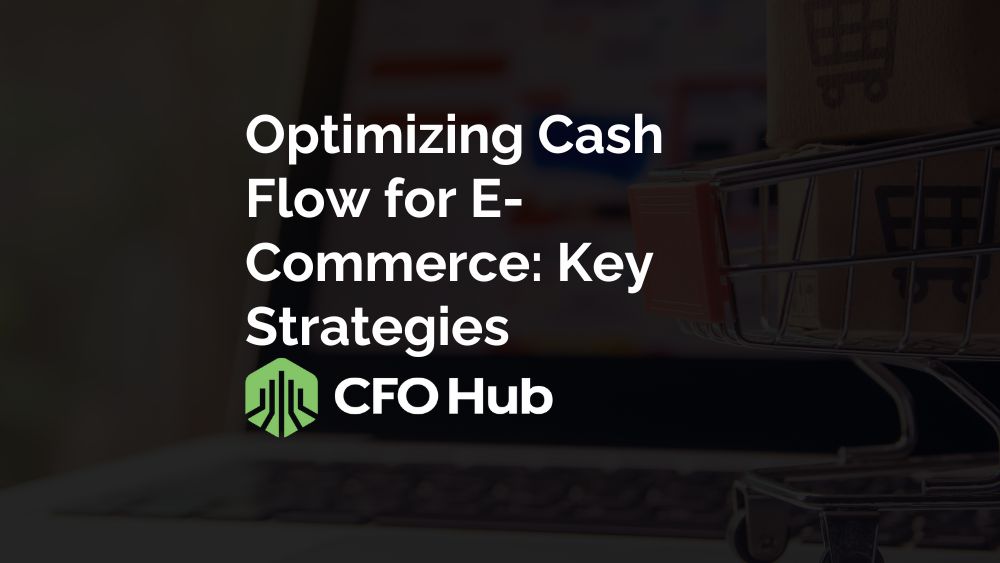In the ever-evolving landscape of e-commerce, managing cash flow effectively is essential for the sustained growth and success of online businesses. Cash flow optimization is the process of ensuring that incoming cash sources exceed outgoing cash expenses, ultimately leading to a healthy and sustainable financial position. By implementing key strategies to optimize cash flow, e-commerce businesses can improve financial stability, increase profitability, and capitalize on growth opportunities.
1. Inventory Management
Efficient inventory management is crucial for optimizing cash flow in e-commerce businesses. Maintaining the right balance of stock levels is essential to avoid excess inventory costs or stockouts that can lead to lost sales. Utilizing inventory management tools and implementing just-in-time inventory practices can help streamline the ordering and stocking process, reducing unnecessary inventory holding costs and freeing up cash for other business needs.
2. Payment Terms and Collections
Negotiating favorable payment terms with suppliers while optimizing collections from customers are essential strategies for optimizing cash flow. Extending payment terms with suppliers can provide businesses with additional time to pay for inventory or services, effectively managing outgoing cash flow. On the other hand, implementing efficient invoicing and payment collection processes can shorten the cash conversion cycle and ensure timely receipt of funds from customers, improving incoming cash flow.
3. Pricing Strategies
Setting competitive and profitable pricing is key to optimizing cash flow in e-commerce. By conducting thorough market analysis and understanding customer behavior, e-commerce businesses can price their products or services optimally to maximize sales while maintaining healthy profit margins. Pricing strategies such as dynamic pricing, bundling, and discounts can be leveraged to attract customers, boost sales, and enhance cash flow.
4. Streamlined Operational Processes
Streamlining operational processes can significantly impact cash flow optimization for e-commerce businesses. Automating routine tasks, improving order fulfillment processes, and optimizing supply chain management can help reduce operational costs and enhance efficiency. By eliminating inefficiencies and bottlenecks, e-commerce businesses can free up cash tied to operational expenses and reinvest it in growth initiatives.
5. Working Capital Management
Effective working capital management is crucial for cash flow optimization in e-commerce. By carefully monitoring and managing accounts receivable, accounts payable, and inventory turnover, businesses can optimize their working capital cycle and ensure that cash is utilized efficiently. Implementing cash flow forecasting and working capital optimization strategies can provide businesses with insights into their cash position and enable proactive decision-making.
6. Shipping Insurance
Shipping insurance is an often overlooked aspect of e-commerce operations that can play a significant role in cash flow optimization. By investing in shipping insurance, businesses can protect themselves against the financial risks associated with lost or damaged shipments, reducing the potential impact on cash flow and profitability. For example, Secursus shipping insurance is a reputable provider offering comprehensive coverage for e-commerce businesses, ensuring peace of mind and financial security in case of unforeseen shipping incidents. Leveraging shipping insurance not only safeguards cash flow but also enhances customer trust and loyalty, ultimately contributing to the long-term success of e-commerce ventures.
Choosing the right payment gateways and merchant accounts can also impact cash flow optimization for e-commerce businesses. Selecting payment providers that offer competitive transaction fees, fast settlement times, and robust fraud protection can help businesses reduce payment processing costs and accelerate cash inflows. Moreover, integrating payment gateways seamlessly into the e-commerce platform can enhance the overall buying experience for customers, leading to higher conversion rates and improved cash flow.
In conclusion, optimizing cash flow is a critical aspect of financial management for e-commerce businesses looking to scale and thrive in the competitive online marketplace. By implementing key strategies such as efficient inventory management, favorable payment terms, pricing optimization, streamlined operations, working capital management, and strategic payment gateway selection, e-commerce businesses can enhance their financial performance, strengthen their cash position, and unlock new growth opportunities. Prioritizing cash flow optimization as a strategic imperative can drive long-term success and sustainability for e-commerce ventures in an ever-changing digital landscape.
Jack Perkins, CPA founded CFO Hub to provide strategic finance and accounting services to enterprises of all sizes. Prior to founding CFO Hub, Jack served as the CFO and Controller of rapidly growing enterprises in California. Jack's written content has been featured in Forbes, Entrepreneur, and several other notable publications.
Visit Jack's Expert Hub to learn more about his experience and read more of his editorial content

